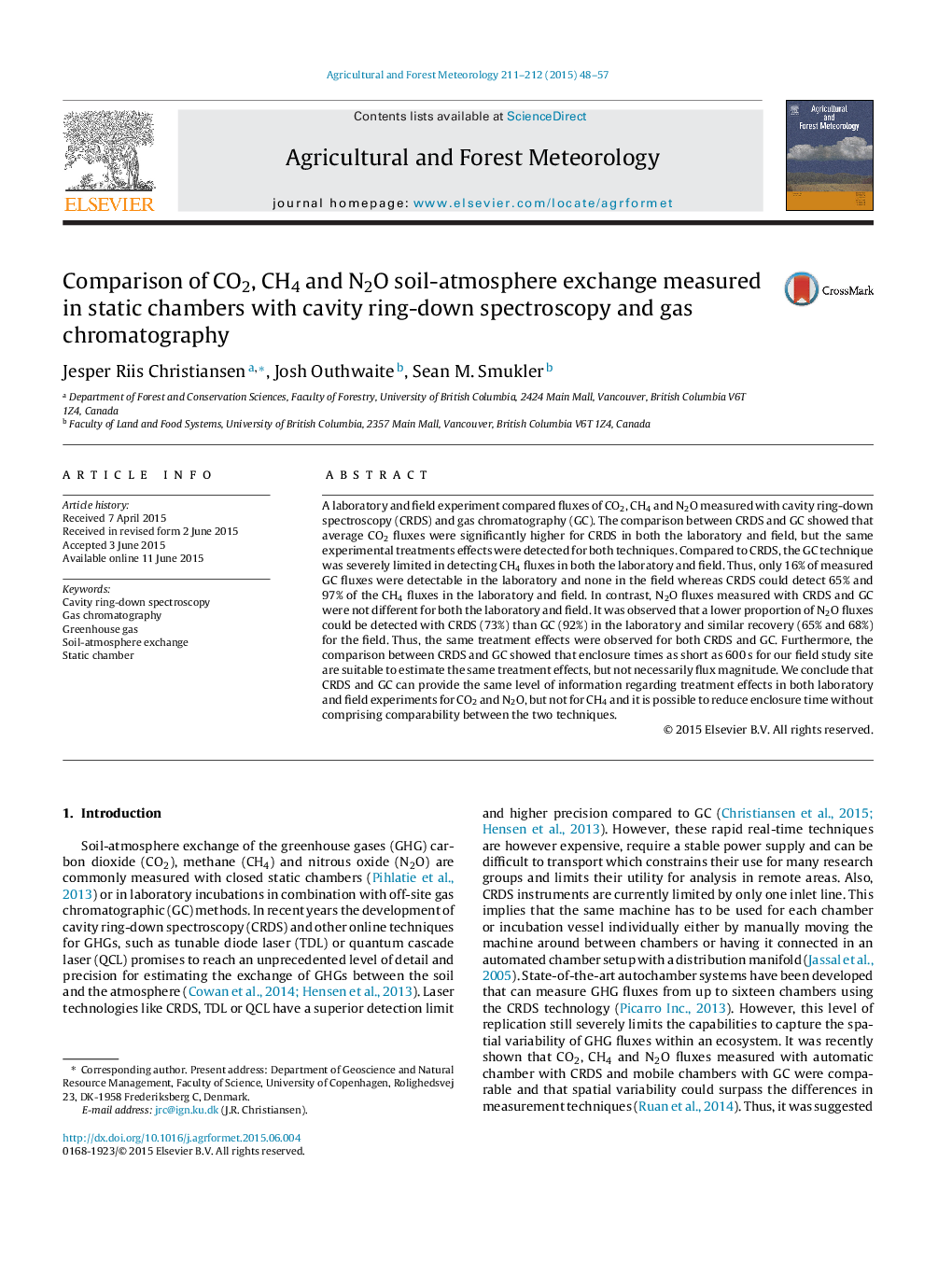| Article ID | Journal | Published Year | Pages | File Type |
|---|---|---|---|---|
| 81581 | Agricultural and Forest Meteorology | 2015 | 10 Pages |
•CRDS fluxes differed significantly compared to GC for CO2 and CH4, but not N2O.•CH4 uptake was detected with CRDS in the field experiment, but not with GC.•The same treatment effects were shown with CRDS and GC for CO2 and N2O, but not CH4.•Shorter enclosure time maintains flux magnitude and error estimates for CRDS and GC.
A laboratory and field experiment compared fluxes of CO2, CH4 and N2O measured with cavity ring-down spectroscopy (CRDS) and gas chromatography (GC). The comparison between CRDS and GC showed that average CO2 fluxes were significantly higher for CRDS in both the laboratory and field, but the same experimental treatments effects were detected for both techniques. Compared to CRDS, the GC technique was severely limited in detecting CH4 fluxes in both the laboratory and field. Thus, only 16% of measured GC fluxes were detectable in the laboratory and none in the field whereas CRDS could detect 65% and 97% of the CH4 fluxes in the laboratory and field. In contrast, N2O fluxes measured with CRDS and GC were not different for both the laboratory and field. It was observed that a lower proportion of N2O fluxes could be detected with CRDS (73%) than GC (92%) in the laboratory and similar recovery (65% and 68%) for the field. Thus, the same treatment effects were observed for both CRDS and GC. Furthermore, the comparison between CRDS and GC showed that enclosure times as short as 600 s for our field study site are suitable to estimate the same treatment effects, but not necessarily flux magnitude. We conclude that CRDS and GC can provide the same level of information regarding treatment effects in both laboratory and field experiments for CO2 and N2O, but not for CH4 and it is possible to reduce enclosure time without comprising comparability between the two techniques.
